
Copernicia prunifera green - Plant
(MRP Inclusive of all taxes)
- Shipping ₹79 for entire order
- Dispatch in 7 days
- Country of origin: India

(MRP Inclusive of all taxes)
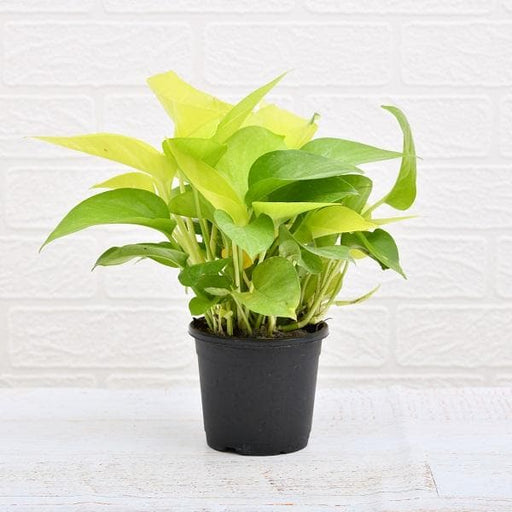 Save 29%
Save 29%
Air Purifier Money Plant with Pot The Air Purifier Money Plant, also known as Pothos or Epipremnum aureum, is a stunning indoor plant that...
View full details
 Save up to 15%
Save up to 15%
Peace Lily, Spathiphyllum - Plant The Peace Lily, scientifically known as Spathiphyllum, is a stunning houseplant celebrated for its elegant white...
View full details
 Save 25%
Save 25%
Jasminum sambac, Mogra, Arabian Jasmine - Plant Jasminum sambac, commonly known as Mogra or Arabian Jasmine, is a fragrant flowering plant...
View full details
 Save 18%
Save 18%
Combo Constituents Includes the Parijat Tree (Night-Flowering Jasmine), a culturally significant plant with fragrant flowers. Description The Pari...
View full details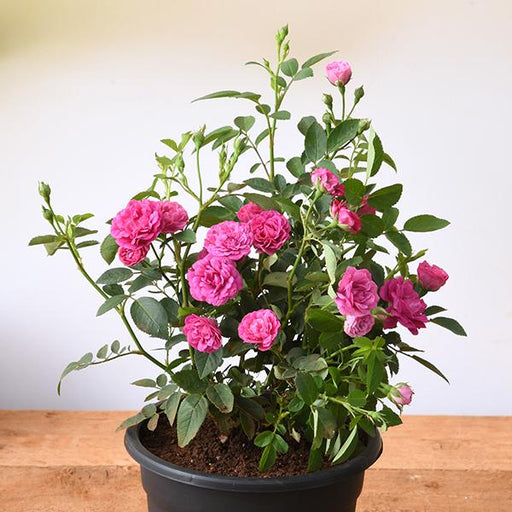
 Save 25%
Save 25%
Miniature Rose, Button Rose (Any Color) - Plant The Miniature Rose, also known as the Button Rose, is a charming and compact flowering plant that ...
View full details Save 25%
Save 25%
Damascus Rose, Scented Rose (Any Color) - Plant The Damascus Rose, also known as Rosa damascena, is a timeless symbol of beauty and romanc...
View full details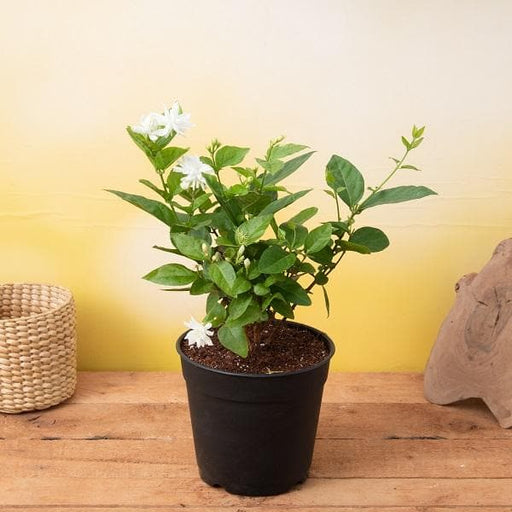
 Save 17%
Save 17%
Beautiful Fragrant Mogra, Arabian Jasmine Plant with Pot The Beautiful Fragrant Mogra, also known as Arabian Jasmine (Jasminum sambac), is...
View full details Save 15%
Save 15%
Pack of Vermicompost and Neem Cake for House Plants Transform your indoor garden with our premium Pack of Vermicompost and Neem Cake, spec...
View full details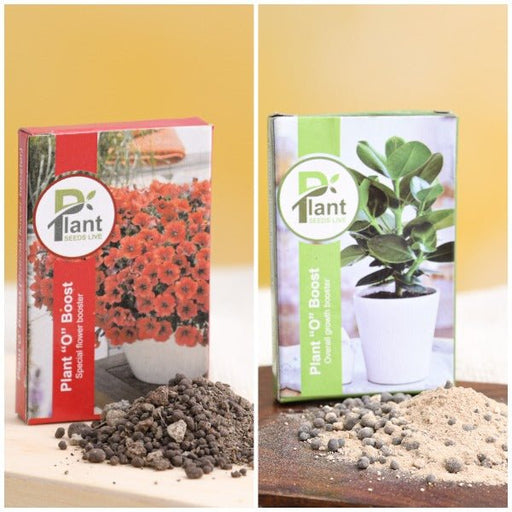
Pack of Plant Growth and Flower Boosters Unlock the full potential of your garden with our Pack of Plant Growth and Flower Boosters! This ...
View full details Save 38%
Save 38%
Combo of Jeevamrut and Neem Raksha for Easy Growth and Protection of Houseplants Transform your indoor garden with our exclusive combo of ...
View full details Save 22%
Save 22%
Plant Nutrients Kit (Pack of 16) for a Healthy Garden Transform your garden into a lush paradise with our Plant Nutrients Kit, featuring 1...
View full details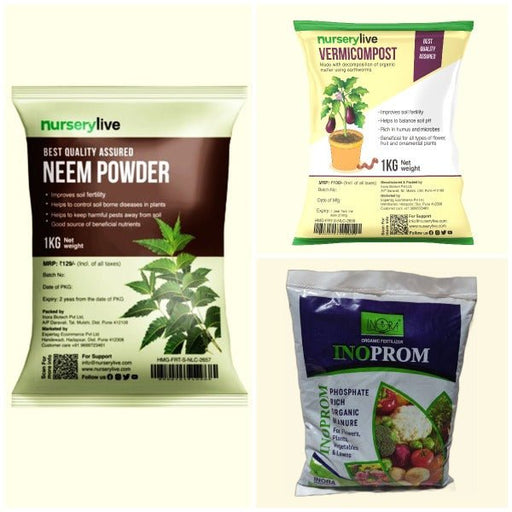 Save 16%
Save 16%
Combo of Top Plant Fertilizers Elevate your gardening game with our exclusive Combo of Top Plant Fertilizers, featuring two bags of premiu...
View full details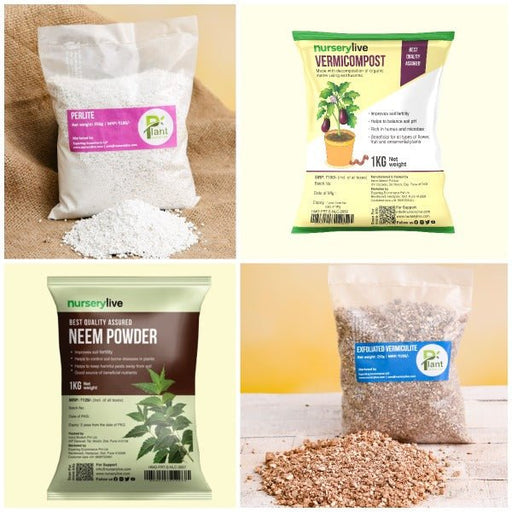 Save 24%
Save 24%
Pack of 4 Additives to Make Soil Healthy and Nutrient Rich Transform your garden into a thriving ecosystem with our Pack of 4 Additives de...
View full details Save 30%
Save 30%
Transform your gardening experience with our premium Combo of Perlite and Vermiculite. This unique blend is designed to enhance soil aeration and ...
View full details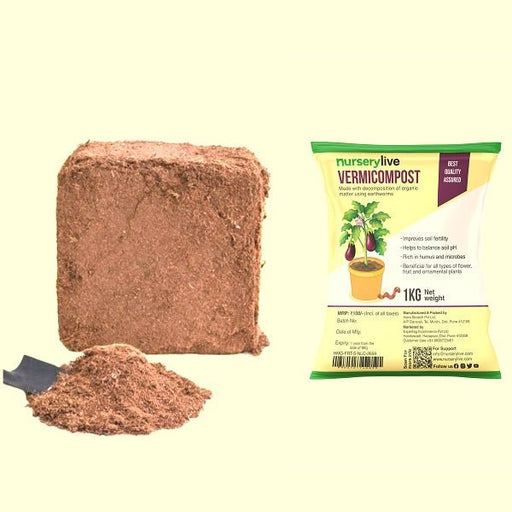 Save 27%
Save 27%
Combo of 2 Vermicompost and Cocopeat - Enrich Your Soil Naturally! Transform your garden into a thriving ecosystem with our Combo of 2 Ver...
View full details
 Save 35%
Save 35%
Best 6 Plants for Perfect Indoor Garden Transform your living space into a lush oasis with our curated collection of the Best 6 Plants for a...
View full details
 Save up to 50%
Save up to 50%
Mini Succulent Garden Pack Transform your space with our Mini Succulent Garden Pack, featuring a delightful collection of 4 any variety beautiful s...
View full details
 Save 30%
Save 30%
5 Best Fragrant Plants Transform your garden or indoor space into a fragrant paradise with our curated selection of the 5 Best Fragrant Plants. Th...
View full details
 Save 24%
Save 24%
Set of 2 Bonsai Looking Grafted Adeniums Transform your indoor or outdoor space with our exquisite Set of 2 Bonsai Looking Grafted Adenium...
View full details Save 45%
Save 45%
Top 4 Die Hard Succulents Pack Transform your indoor or outdoor space with our Top 4 Die Hard Succulents Pack, featuring a curated selecti...
View full details
 Save 30%
Save 30%
5 Best Indoor Plants Pack Transform your living space into a lush oasis with our '5 Best Indoor Plants Pack.' This carefully curated collection fe...
View full details
 Save 25%
Save 25%
Set of 4 Evergreen Air Purifier Plant Pack Transform your indoor space into a lush, green oasis with our Set of 4 Evergreen Air Purifier Pla...
View full details| SrNo | Item Name |
|---|---|
| 1 | Copernicia prunifera green - Plant |
The Copernicia prunifera, commonly known as the Carnauba Palm, is a stunning tropical plant native to Brazil. Renowned for its striking fan-shaped leaves and impressive height, this palm can reach up to 25 feet in optimal conditions. Its waxy leaves are not only visually appealing but also serve a practical purpose, as they produce carnauba wax, often referred to as "the queen of waxes." This plant thrives in warm climates, making it a perfect addition to gardens and landscapes in tropical and subtropical regions.
What makes the Copernicia prunifera special is its unique ability to adapt to harsh environments, including drought conditions. This resilience, combined with its aesthetic appeal, makes it a favorite among landscape designers and plant enthusiasts alike. The plant's wax is harvested sustainably, contributing to local economies while promoting environmental conservation.
One of the standout features of the Copernicia prunifera is its remarkable leaf structure. The leaves can grow up to 10 feet long and are covered in a natural wax that protects them from the elements. This wax is not only valuable for commercial use but also plays a crucial role in the plant's survival, reflecting sunlight and reducing water loss.
Taking care of your Copernicia prunifera is like nurturing a diva; it demands attention but rewards you with stunning foliage. This palm thrives in well-drained soil and loves a sunny spot, so make sure it’s not stuck in the shade like a wallflower at a dance party. Water it regularly, but don’t drown it—think of it as a thirsty friend, not a fish. Fertilize during the growing season to keep it happy and healthy, and watch out for pests; they’re like uninvited guests at a party.
This palm isn’t just a pretty face; it’s a multitasker! Copernicia prunifera, also known as the carnauba palm, offers a plethora of benefits. Its leaves are used to produce carnauba wax, the “queen of waxes,” which is perfect for everything from car polish to cosmetics. Plus, it provides shade and habitat for wildlife, making it the ultimate eco-friendly companion. Plant one, and you’ll be the proud parent of a tree that gives back more than it takes.
Propagating Copernicia prunifera is like playing matchmaker for plants. Start with seeds, which can take a while to germinate, so patience is key—think of it as waiting for a slow-cooked meal. Soak the seeds for a day to kickstart the process, then plant them in a warm, humid environment. Keep them moist but not soggy, and soon you’ll have little green babies sprouting up, ready to take on the world. Just remember, every great love story takes time!
The uses of Copernicia prunifera are as diverse as a Swiss Army knife. Beyond its stunning appearance, this palm is a superstar in the wax industry, providing carnauba wax that’s used in everything from food to cosmetics. Its fronds can be woven into hats and baskets, making it a crafty companion. Plus, it’s a fantastic shade provider, perfect for those lazy afternoons lounging in the sun. Who knew a tree could be so versatile?
If you’re wondering where Copernicia prunifera feels most at home, think tropical vibes! Native to Brazil, this palm loves sandy, well-drained soils and plenty of sunshine. It’s like the beach bum of the plant world, thriving in warm climates and soaking up the rays. While it can tolerate some drought, it prefers a little moisture—just enough to keep it feeling fresh and fabulous. So, if you’re in a tropical zone, consider this palm your new best friend.
The growth rate of Copernicia prunifera is like a slow but steady tortoise in a race. This palm isn’t in a hurry; it takes its time to reach maturity, typically growing about 1 to 2 feet per year. But don’t let that fool you—once it gets going, it can reach impressive heights of up to 50 feet! So, while you might not see instant results, patience pays off, and soon you’ll have a towering beauty gracing your landscape.
Every plant has its enemies, and Copernicia prunifera is no exception. Common pests include scale insects and spider mites, which can be as annoying as a fly at a picnic. Keep an eye out for these little troublemakers and act fast if you spot them. A gentle insecticidal soap can be your best friend in this battle. Remember, a healthy palm is a happy palm, so regular checks will keep your Copernicia prunifera thriving and pest-free.
When it comes to sunlight, Copernicia prunifera is a sun worshipper. This palm craves full sun to flourish, so don’t even think about putting it in the shade. It’s like a plant that’s always ready for a beach day, soaking up those rays to grow strong and tall. If you want your palm to thrive, give it at least six hours of direct sunlight daily. Just think of it as giving your plant a daily dose of vitamin D!
The ideal soil type for Copernicia prunifera is well-draining and sandy, like a beach vacation for your roots. This palm doesn’t like to sit in water, so avoid heavy clay soils that can lead to root rot. A mix of sand, peat, and perlite will create a luxurious environment for your palm to thrive. Think of it as a spa day for your plant—comfortable, airy, and just the right amount of moisture.
Incorporating Copernicia prunifera into your landscaping is like adding a touch of tropical flair to your home. This palm’s striking appearance makes it a focal point in any garden, whether you’re going for a modern look or a lush paradise. Plant it as a standalone specimen or in groups for a dramatic effect. Just imagine the envy of your neighbors as they admire your palm’s elegance and stature. It’s the ultimate conversation starter!
If you’re considering adding Copernicia prunifera to your garden, make sure you live in a warm climate. This palm thrives in USDA zones 10-11, where temperatures are mild and the sun shines bright. It’s not a fan of frost, so if you live in a colder area, you might want to keep it indoors or in a greenhouse. Think of it as a tropical vacation for your plant—sunny, warm, and absolutely fabulous!
Good news for pet lovers! Copernicia prunifera is non-toxic to both cats and dogs, making it a safe choice for your home. You can enjoy its beauty without worrying about your furry friends nibbling on its leaves. It’s like having a plant that’s the life of the party without the drama of toxicity. So go ahead, invite this palm into your home and let it shine without any worries!
Copernicia prunifera green, also known as the Carnauba palm, is a tropical beauty hailing from Brazil. This palm is not just a pretty face; it produces the wax used in everything from car polish to candy! Talk about a multitasker!
Expect this palm to reach heights of 15 to 25 feet, making it a towering presence in your garden. Just imagine it waving at the neighbors while you sip your morning coffee. It’s like having a personal skyscraper, but with more flair!
This palm loves full sun and well-drained soil, so think of it as the sunbather of the plant world. It thrives in warm climates, so if you live in a chilly area, it might just give you the cold shoulder—literally!
Watering this palm is like giving it a spa day—moderation is key! Allow the soil to dry out between waterings. Overwatering can lead to root rot, which is like a bad hair day for plants. Keep it hydrated but not drenched!
Unfortunately, this palm isn’t a fan of the cold. It prefers temperatures above 50°F. If you live in a frosty area, consider giving it a cozy indoor spot during winter. Think of it as a seasonal vacation for your palm!
Keep an eye out for pesky pests like spider mites and scale insects. They can be as annoying as a fly at a picnic. Regularly inspect your palm and treat any infestations promptly to keep it looking fabulous!
Yes, you can! Just ensure it gets plenty of bright light and enough space to stretch its leafy arms. It’s like having a tropical vacation in your living room, minus the sand and surf. Just don’t forget to water it!
This palm is a slowpoke, growing about 1 to 2 feet per year. Patience is a virtue, especially when waiting for this beauty to reach its full glory. But hey, good things come to those who wait, right
A balanced, slow-release fertilizer works wonders for this palm. Think of it as a gourmet meal for your plant. Feed it during the growing season, and it’ll reward you with lush, green fronds that make your neighbors green with envy!
While it can handle short dry spells, it prefers consistent moisture. It’s not a desert dweller; it’s more of a beach bum. So, if you forget to water it for a week, it might sulk, but it won’t throw a tantrum—just a little drama!
Beyond its stunning appearance, this palm is a superstar in the wax industry. Its leaves produce carnauba wax, used in cosmetics, food, and even surfboards! Who knew your plant could be such a versatile overachiever
Good news! Copernicia prunifera green is non-toxic to pets. So, let your furry friends frolic around it without worry. Just make sure they don’t mistake it for a chew toy—those fronds are for looking, not munching!